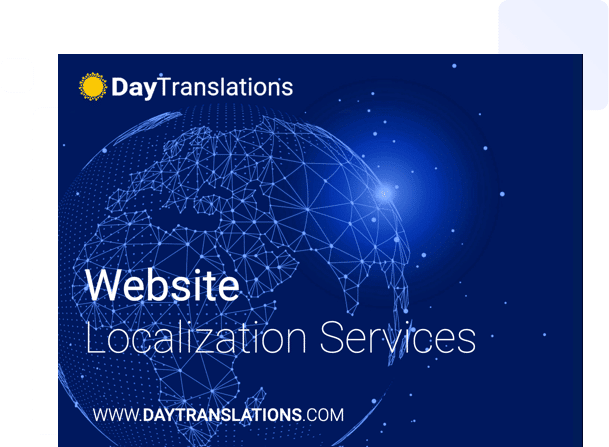Tech companies that want to go global face a major challenge. Language barriers.
Right now, most companies only offer websites in English. This cuts off entire regions of online buyers. If you want to connect with your international audience, you need to show that you understand their needs. You need to reach them in their preferred language.
Let’s explore why a multilingual marketing strategy is so important and how you can create one for your tech brand.
Why is Multilingual Marketing Important for Tech Companies?
More than 55% of websites are in English.
When you realize that only 5% of internet users speak English as their native language, this seems like a waste of opportunity.
For people who want to access tech in their primary language, this creates a huge barrier.
This is why it’s so important to offer content in multiple languages.
When people can shop in the language they know best, they can engage better. They can understand what you offer and how you do it.
Here’s why this strategic approach matters.
Helps You Reach New Markets
A multilingual marketing strategy lets you reach international markets. You can connect with more potential customers to increase your customer base.
Be sure to tailor content and marketing messages to different languages and cultural nuances and cultural. This helps you attract and retain users from diverse linguistic backgrounds.
Improves Brand Perception
You need culturally relevant communication to position your tech brand as a global leader.
It has to be accessible to native speakers and respect cultural norms.
This helps you build deeper connections and foster trust with international audiences. In turn, global users have a better perception of your brand.
Enhances Customer Experience
Most people prefer to buy in their language. 76% of online buyers are more likely to buy from websites in their native tongue. 40% won’t consider buying at all if the website isn’t in their language.
When you offer localized marketing content and support, you improve the customer experience. This boosts customer satisfaction, leading to loyalty and positive reviews.
Boosts SEO
A multilingual content strategy improves your search visibility. This means you appear higher in local search rankings.
A localized SEO strategy is vital for multilingual marketing. It helps you appear in relevant searches beyond English-speaking regions.
5 Ways to Leverage Multilingual Marketing for Your Tech Company
Multilingual marketing is the key to reaching global target markets. But it’s not just about the obvious advertising and marketing content.
You need to create a seamless overall experience for your multilingual audience. Think beyond simple social media posts. Consider your customer service, support, and the quality of your product.
Here’s how:
1. Translate Your Website
A multilingual website can reach a broader audience. With a localized site, you’ll boost your search engine rankings for local search terms.
This makes it easier for international customers to engage with you.
Here’s how to build a multilingual website:
- Offer a language switcher so users can select their language version
- Use professional translation services for accurate web content and product descriptions
- Focus on search engine optimization by translating meta descriptions, alt-text, and keywords
2. Capture Local Insights in Your Content
Adapt your content and marketing materials to local cultures. This helps you connect with your target audience in a culturally relevant way.
When you show you understand local needs, you build trust and boost engagement. And customers feel seen.
If you want to understand cultural nuances, you need to research. Look into the market trends, interests, and values you want to target. (But it’s time-consuming to do this manually.) Instead, use a web data collection platform like Bright Data to help.
Bright Data offers powerful tools, such as their global proxy network, that help tech companies collect data as a local would to gain deeper insights into local trends and customer behaviors. It’s custom datasets and API-based solutions track global trends and competitor behavior in real-time across regions.
This helps you gather region-specific insights so you can tailor your content to fit each target audience’s cultural context.
You can also hire a localization service. These services know how to inject cultural references and humor relevant to your target markets.
3. Diversify Your Social Media
Social media is an excellent way to connect with international buyers.
It’s a two-pronged approach. Speak to them in their language and meet them where they congregate.
Here’s how:
- Research popular platforms in each country
- Create separate social media accounts for each language
- Use localized visuals and culturally relevant hashtags
- Engage with followers in their native language
For instance, a gaming company might manage different accounts for various foreign language audiences. While they share game updates with everyone, they use Facebook in the US, LINE in Japan, and TikTok in Indonesia.
4. Offer Multilingual Support
Many customers form brand options based on support.
If a non-English-speaking buyer heads to your site with a question, can you support them in their native language?
If an existing customer needs help, can you offer it in a language they understand?
Providing customer support in multiple languages fosters loyalty with existing customers. It also markets your brand as culturally aware.
This helps you create an inclusive environment that’s far more engaging to a wider audience.
You can do this by:
- Hiring multilingual support agents
- Installing an AI chatbot with multilingual capabilities
- Offer multilingual FAQs and self-service options
5. Test Your Brand’s Multilingual Capacity
Ever heard of red teaming? It’s a tech term where ethical hackers and vulnerability assessors attack software to test its strength.
You can do the same with your multilingual marketing efforts.
A “red team” exercise helps you identify weaknesses before they impact your reputation.
This approach tests linguistic accuracy and cultural appropriateness.
Here are a few good methods to try:
- Linguistic Red Teaming – Hire linguistic experts to check translations and test for cultural appropriateness.
- Misinformation Campaigns – Consider potential misinformation or negative sentiment on social media. Have your team practice responding to commenters in their native languages.
- Crisis Simulations – Run crisis simulations in different languages, like a product recall. Test how well your team can respond in the appropriate language.
Reach a Global Audience
Ready to expand into international markets? A multilingual marketing approach is vital.
But remember, translation is only the first step. You need accurate, culturally relevant content across all digital platforms.
If you need help with your multilingual marketing efforts, connect with Day Translations. Our localization services are the most effective way to reach new global markets.
Author Bio:
Kelly Moster
Kelly Moser is the co-founder and editor at Home & Jet, a digital magazine for the modern era. She’s also the content manager at Login Lockdown, covering the latest trends in tech, business and security. Kelly is an expert in freelance writing and content marketing for SaaS, Fintech, and ecommerce startups.












Sorry, the comment form is closed at this time.